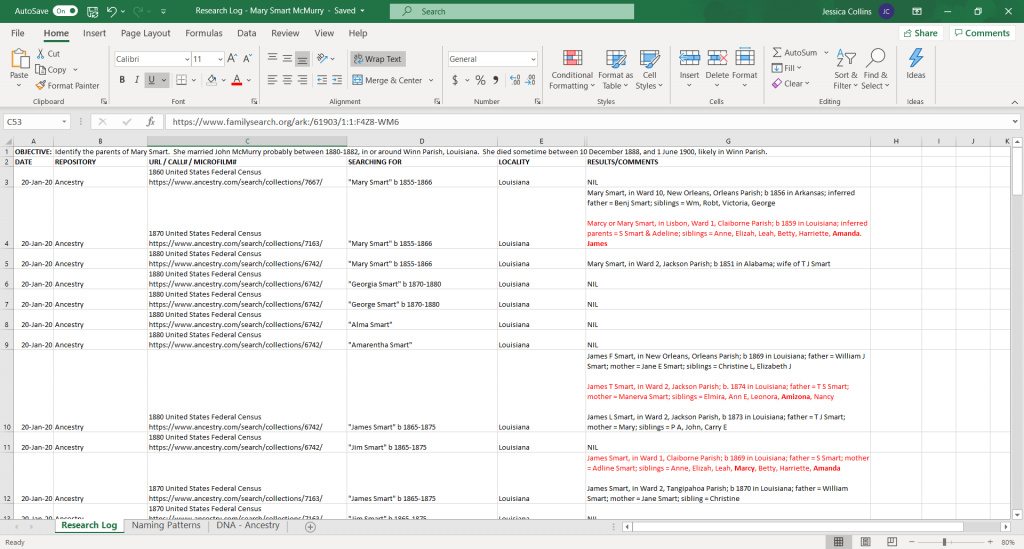
When people say they are “doing genealogy,” the fifth step in the Research Like a Pro (RLP) process is probably what they’re envisioning — the nitty, gritty work in libraries and archives. It’s definitely the most fun part of family research. Finding those golden nuggets of evidence is such a high!
But a challenging research problem requires the four steps we previously discussed in this series: forming a research objective, analyzing sources, researching the location, and making a research plan. If the answer to my question could be answered directly by a single piece of evidence, wandering aimlessly may eventually lead me there. But when a problem requires indirect and negative evidence, it is necessary to collect multiple pieces of evidence, analyze them, and build an argument — all things that require a plan and thorough record keeping.
Research logs are key to doing the research and recording my findings. Some people use paper research logs or notebooks, but I prefer electronic ones. I use an Excel spreadsheet and save it to my Microsoft OneDrive in the folder I created for the project. My OneDrive is synced across all my devices — laptop, tablet, and phone — so I always have it with me. However, typing in an Excel spreadsheet from my phone or tablet is slow, so I bring my laptop for planned research sessions. If I need to record something when I don’t have my laptop, I usually snap photos of the source and its contents with my phone and add it to my log when I’m back at a keyboard. If it’s an electronic source, I either email a link back to myself or save it to a USB drive with a similarly-named text file containing the source citation.
Yes, research logs should have source citations, and I really do try to make them at this step — but I’m lazy. I will make a source citation if I’m in a repository where I must create it then to capture all the information correctly. But if I’m doing something standard like census research or marriage records, I write quick notes and will craft the citation when I write my findings.
For the Mary Smart McMurry research project, I took my research plan and decided which of the actions from the prioritized research strategies section I could do in the allotted time. (I’m writing an article about Mary for the spring issue of Stirpes, so I do have a deadline for this project.) I tried to tackle all the strategies from my plan, but I stalled with the DNA component. I may try to add some DNA evidence in the future, but it has been difficult getting all the best known testers to grant access to their data.
So, what my research log look like? Here’s a screenshot:

When I find a key piece of evidence I want to investigate further, I make the text red and sometimes bold important words. I also like to make separate tabs on the spreadsheet for areas of research that need their own space for organizing. One example is “Naming Patterns” on the image above. On that tab, I listed of all the Smart siblings’ children and made notes about similarities. Another tab (not pictured) is a Smart Siblings timeline I created to compare movements of Mary and her hypothesized siblings.
I’ve decided not to post my entire research log here — it’s big, and I kind of want to keep it to myself until I reveal the next step in the process: Writing the Research Report. But if you are researching Mary Smart McMurry or any of her hypothesized siblings, contact me and I’ll share the log.
Doing the research is definitely my favorite part of this process, but it is closely followed by the final step: Writing the Research Report.

I learn so much from your posts. I love how organized you are in your research and I’ve started incorporating some of your research methods into my own.
Now I can’t wait to see what you’ve found out about Mary, and where it will lead. Could you have cracked open the Mysterious Smart family?